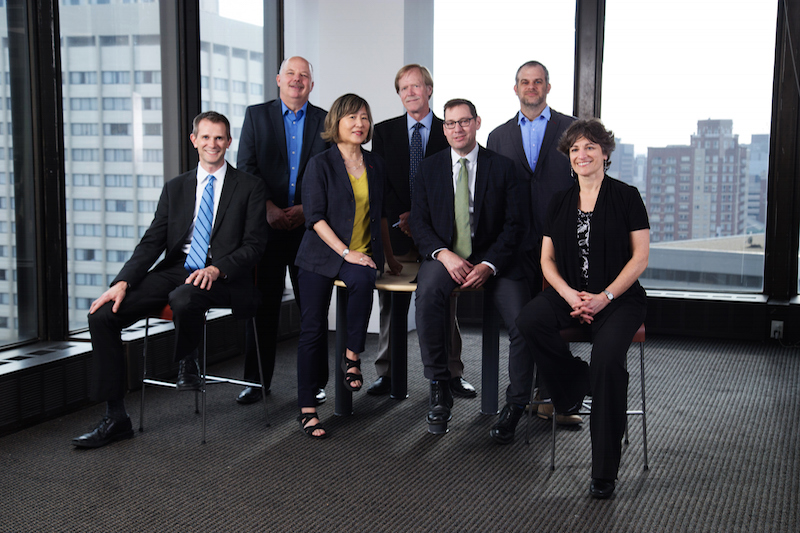The Washington, D.C. architectural and planning practice Quinn Evans Architects will expand to five office locations on May 1 when its acquisition of Baltimore-based Cho Benn Holback + Associates becomes effective.
Quinn Evans, founded in 1984, also operates from offices in Detroit and Ann Arbor, Mich.; and Madison, Wis. The new addition brings Quinn Evans’ employee count to more than 140.
The 30-person Cho Benn Holback, which was established in 1979, will remain at its current location, and operate under its name with the addition “a Quinn Evans Company.” No changes to its management or staffing are anticipated.
The two firms have portfolios in cultural, educational, civic, and urban infill projects, with an expertise in historic preservation and adaptive reuse. Cho Benn Holback + Associates has been recognized with more than 200 design awards, and is regarded for its design and revitalization work in Baltimore.
“Quinn Evans Architects is well known for its resourcefulness in urban planning and design, and that focus is what has inspired our own work through the years as well,” says Diane Cho, AIA, one of the firm’s founding partners. “We are looking to help rebuild and reinvigorate communities. Working together, we’ll have an opportunity to take our experience to other cities, and bring Quinn Evans’ perspective to our work here in Baltimore as well.”
Larry Barr, AIA, President of Quinn Evans Architects, views Cho Benn Holback + Associates as an ideal fit for Quinn Evans Architects in terms of staff, expertise, and portfolio. “I have long admired the thoughtful and creative approach reflected in their work—the caliber of design is consistently visionary and transformative. Projects like the Lillian Jones Apartments; the National Postal Museum; and Open Works, the state-of-the-art new maker space in Baltimore, are standouts.”
Both firms have completed a number of theater projects: Quinn Evans is currently designing the modernization of the 500-seat, 36-year-old Terrace Theatre at the John F. Kennedy Center for the Performing Arts in D.C., and Cho Benn Holback recently completed the $28 million renovation of Center Stage in Baltimore. (Whiting-Turner Construction was the GC on that project.)
Related Stories
Architects | Apr 10, 2018
HOK names a physician as its new Chief Medical Officer
Dr. Andrew Ibrahim will collaborate with the firm’s medical planning and design teams.
Architects | Apr 5, 2018
AIA grants $100,000 to four Upjohn Research Initiative projects
The purpose of the grant is to provide base funds for applied research projects that will advance the design profession’s knowledge and practice.
Architects | Apr 5, 2018
Tech Report 5.0: The Human Touch
Can studying humans at a behavioral level produce better buildings? Cognitive architecture experts are working to find out.
Architects | Apr 4, 2018
How to acquire speaking engagements and hone your skills
So, you understand the benefits, but how do you actually get started with speaking engagements?
Architects | Apr 4, 2018
8 things to consider before using digital media to communicate with employees
The Marlin Company, a visual communications and digital signage provider, published a guide that outlines eight basic questions, along with some advice, about workplace digital signage.
Education Facilities | Mar 30, 2018
How can we design safer schools in the age of active shooters?
How can we balance the need for additional security with design principles that foster a more nurturing next-generation learning environment for students?
Architects | Mar 26, 2018
Designing for homeless facilities: Critical spaces to consider
The City of San Diego is home to the fourth largest homeless population in the U.S.
Education Facilities | Mar 23, 2018
An introvert's oasis: How to create learning environments for all student types
In order to understand why a school day can be so grueling for an introverted student, it’s important to know what it means to be introverted, writes NAC Architecture’s Emily Spiller.
Architects | Mar 22, 2018
The benefits and nuances of integrated design
Achieving integrated design usually means operating under a strong relationship.
Architects | Mar 14, 2018
Becoming nature: The building design evolution meets the living building revolution
With the environmental movement, sustainability became a marker of innovation in design for the built environment.
















